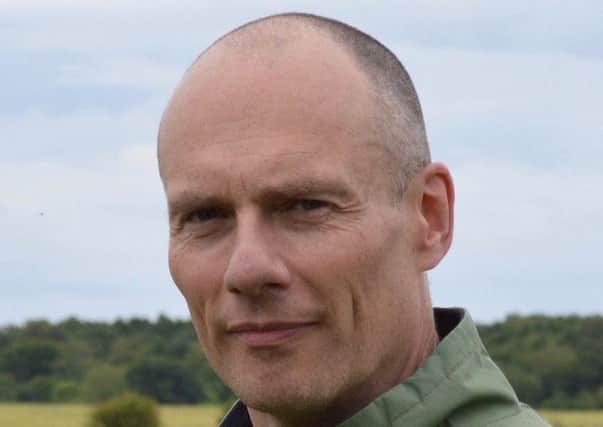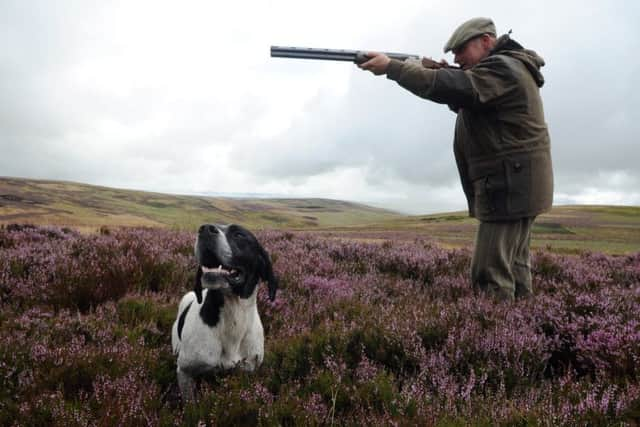Count on us to get wildlife information


At just about any time of the year researchers from the Game & Wildlife Conservation Trust are out on the hill, or in fields and woodland, or in a backroom over a dissected carcass – and counting something.
Knowing how many you have of anything is important, especially if you are monitoring its success, analysing the threat it may present or estimating whether you can take a sustainable harvest. So the Game & Wildlife Conservation Trust is doing this across a whole range of species including red and black grouse; grey partridge; mountain hare and brown hare; lapwing, curlew and other waders; songbirds; rabbits; earthworms; gut parasites; moths, and more.
Advertisement
Hide AdAdvertisement
Hide AdFor many years the Trust has been involved in annual counts using pointing dogs over grouse moors to establish the breeding success of red grouse, with their populations susceptible on an annual basis to wet springs and late cold snaps and snow. Right up until final counts at the end of July there is often no clear picture of what the coming season will hold, and our surveys can throw up significant variations by region across Scotland depending on factors such as the impact of the weather, or disease.


In the Uplands the Trust is also engaged in a joint three-year study with the James Hutton Institute and Scottish Natural Heritage, surveying mountain hares to arrive at more accurate population densities. A part of this project involves trialing different methods to allow effective gathering of data including collecting dung, lamping, thermal imaging and daylight walking of transects.
At the Game & Wildlife Demonstration Farm at Auchnerran the Trust, among a number of projects, is undertaking work involving waders, notably lapwing, curlew and woodcock. Whilst lapwing surveys involve monitoring numbers of nests and displaying male birds, woodcock surveys are carried out for short periods at dusk in early summer. Male woodcock are promiscuous and therefore may display at one location before moving on to display at another on another day. These aerial displays, known as “roding”, are best monitored by multiple observers recording information simultaneously in order to avoid double counting.
The grey partridge element of the EU-funded four-year PARTRIDGE project involves a synchronised system of transmitting the call of a cock partridge at 11 predetermined points on 1km transects and then recording the responses. The Trust in Scotland is undertaking this research on two sites, one in Fife and the other in Midlothian/East Lothian with six transects at each location. The target is for four surveys at each site, timed for around half an hour after sunset. All this data needs to be gathered before the end of March when cock and hen birds will have paired up.
An aim of the project is the improvement of on-farm biodiversity through new techniques, and with the knowledge that improving habitat for certain indicator species will result in positive impacts on a much wider scale. The PARTRIDGE initiative also involves breeding bird surveys and hare counting with, for this work, hares being counted by torchlight (lamping) just after darkness falls over transects totaling at least 5km at each location. Numbers of other species such as deer, foxes and rabbits are recorded too. The project encompasses a total of ten demonstration sites in Europe with all partners counting in a standardised way to ensure robust comparisons can be made for data collected across all locations (see www.northsearegion.eu/partridge for more information).


In Fife, GWCT is also monitoring moths, as a result of which in June last year the Trust detected the arrival of the diamondback moth, with 132 trapped in just one evening when none at all were recorded in 2015. The moths were blown in from Europe on easterly winds and also reported on farms further south. Their arrival was alarming because the larvae of this species can develop a resistance to insecticides and can have a devastating impact on brassica species, oilseed rape, peas and other crops.
Counting means that what the Trust and others do is targeted at the right place at the right time. How numbers change is at the root of how we can inform others, including the Scottish Government, to make the right decisions and to provide the right levels of support in the right areas.
We are often looking for volunteers to help with our survey work so if you enjoy the crepuscular hours of dawn and dusk and would like to see and hear some of the best of Scotland’s wildlife contact GWCT Scotland on 01738 551511 or e mail [email protected]
Dr Dave Parish, Senior Scientist, Scottish Lowland Research, Game & Wildlife Conservation Trust.